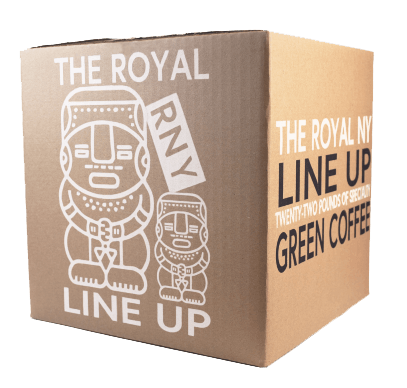No products in the cart.
Coffee
Origin Profile: Indonesia

Overview
Production: 10.7 Million Bags Arabica & Robusta
1.25 Million bags of Arabica
Primary Varieties: Typica, Jember, TimTim, Gayo, Ateng, Catimor
Average Farm Size: 2 million farms <1 Hectare &
Some Large Estates in Java and Sumatra
Maximum Elevation: Puncak Jaya 4,884masl
Notable Growing Regions: Sumatra, Java, Sulawesi, Flores, Bali
Harvest Season: Varies by Island
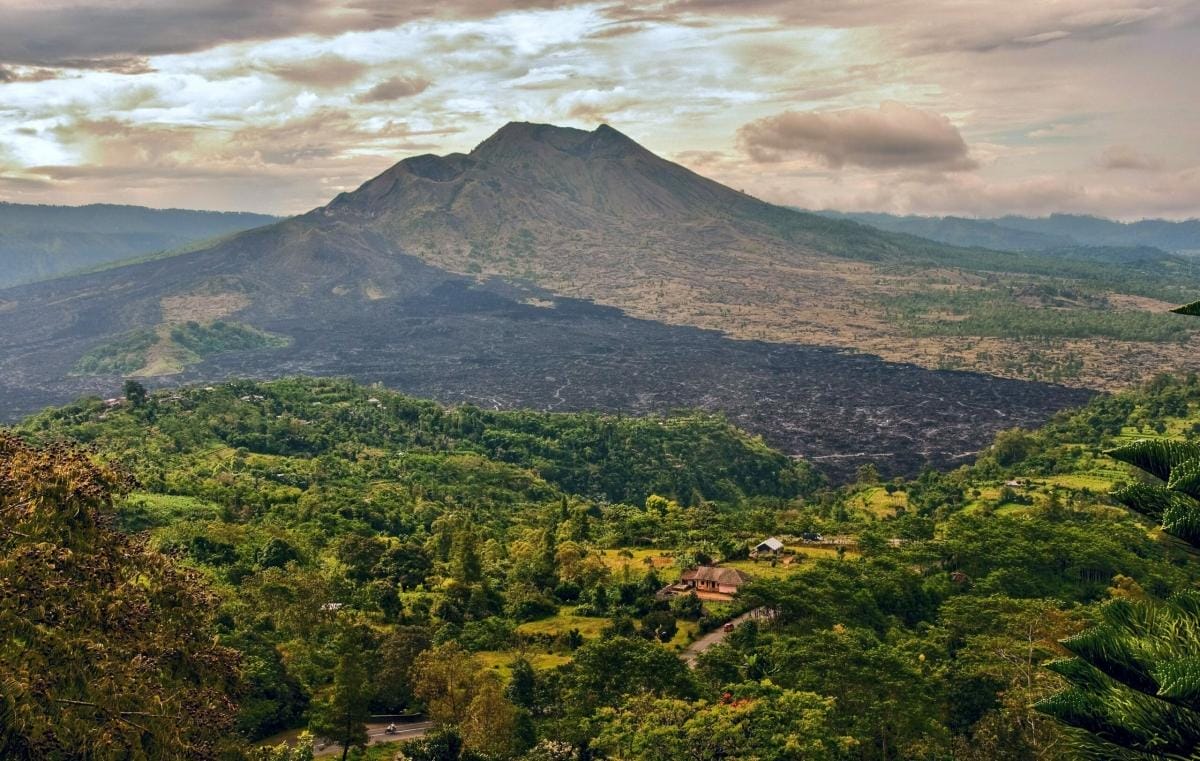
Geography
Indonesia is an archipelago in Southeast Asia. Roughly three-quarters of its area is accounted for by the islands of Sumatra, Western New Guinea, and Kalimantan or Southern Borneo. Java and Sulawesi account for nearly all of the remainder, but all together, there are over 17,500 islands in the island chain with nearly half remaining uninhabited. The islands formed from the immense volcanic activity in the region as a result of the convergence of several tectonic plates along the southwestern edge of the Pacific Ring of Fire. There are over 100 active volcanoes in the country, with many erupting continuously or frequently. The coasts are comprised typically of swamps and marshes with elevation increasing toward the center of each island. They are largely covered in thick, dense rainforests.
Climate
The equatorial location of the country ensures relatively hot and even temperatures year round. Primary variations are a result of elevation with the hottest average temperatures occurring near the coasts while inland highlands are warm during the day with cooler nights. Most of Indonesia experiences heavy rainfall patterns year round, with the wettest season from December to March. The heaviest rains fall in the mountainous regions of Sumatra and Western Java. Eastern Java, Flores, Timor, and Bali will experience a more pronounced Dry season from June to October. The wet season is driven by monsoon winds that carry warm and moist air from Asia. From June to October, dry air is carried over eastern Indonesia from Australia.
Growing Regions
Sumatra accounts for approximately 75% of Indonesia’s total coffee crop. Southern Sumatra is dominated by Robusta cultivation while the provinces of North Sumatera and Aceh produce a majority of the Arabica. The most recognizable arabica from Sumatra is the Mandheling coffee. The name is associated with the Mandailing people although there is not a Mandailing or Mandheling province specifically. Mandheling coffee is primarily grown around Lake Toba in the central parts of North Sumatera province, but it is also a label that may be applied to any high-quality Arabica of northern Sumatra. On the northernmost tip, Aceh produces some of the highest quality coffee in the country. The Gayo Highlands in the center of Aceh have gained some recognition especially recently for producing more complex and vibrant coffees.
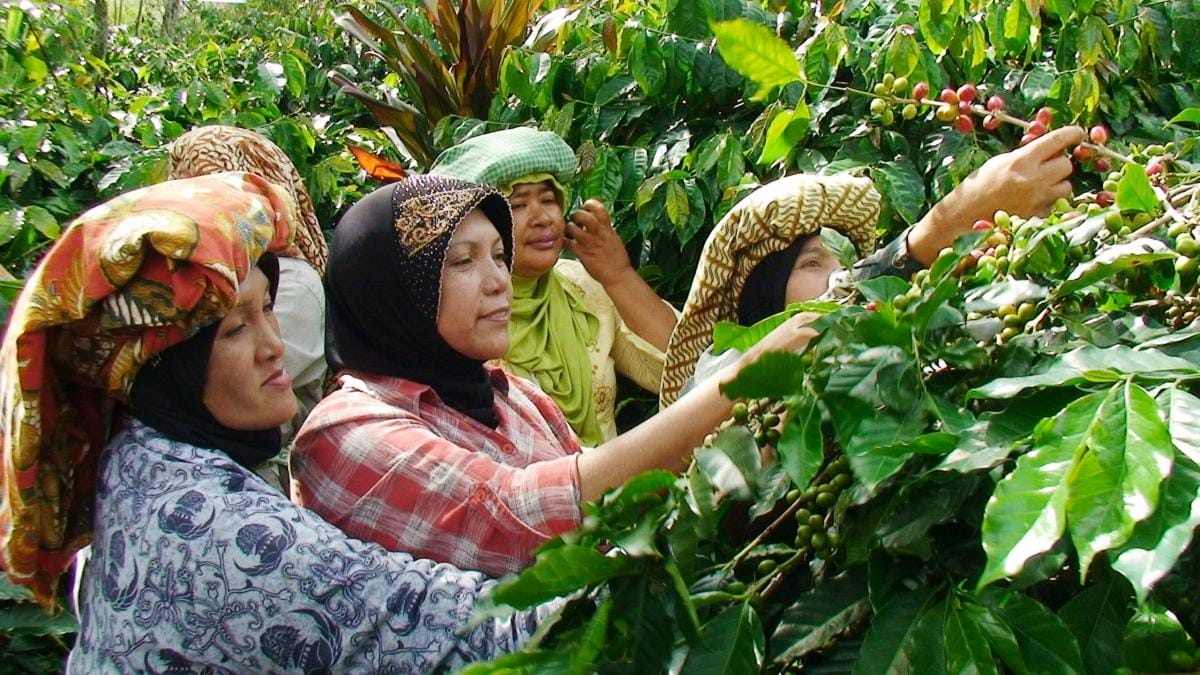
The island of Java accounts for about 10% of Indonesia’s coffee production. Most of the arabica is grown in East Java around the Ijen Plateau. While there are many small-holder farms, old government-owned estates dating back to the 1800s produce the majority of the coffee in this area. The five primary estates are Kayumas, Pancoer, Blawan, Jampit, and Tosari. The estate coffee is washed unlike the wet-hulled coffee common across the region. The cup profile is typically lighter and cleaner.
The island of Sulawesi accounts for about 10% of Indonesia’s coffee crop as well. The most well-known coffee comes from the Toraja highlands in the center of the country which rise over 2,000masl. The steep and rugged terrain left the Toraja people largely untouched by initial Dutch colonization, preserving their rich culture of large communal houses and elaborate funeral celebrations. They produce mostly wet-hulled coffee, with a small portion being washed.
Flores or the island of Flowers produces around 5% of Indonesia’s coffee crop. This long and narrow island is highly volcanic with mountain peaks over 2,200m, although land at those elevations is limited. The island is extremely diverse with over 15 native languages being spoken. The island primary uses the wet-hulled processing style or ‘ngura’ in the native bajawa language.
Bali produces a very limited amount of coffee, about 1% of the country’s total crop. The farms are organized into co-ops known as Subak Abian. Subak are irrigation systems developed by Hindu priests over 1,000 years ago. The island received the country’s first GI or Geographical Indication, with the goal of producers being able to negotiate better pricing for geographical product differentiation and assurance for Bali Kintamani. The most well known coffee from Bali is the Bali Blue Moon. It is known for its distinct blue pigmentation as a result of its high moisture when hulled. There have been claims that the blue hue correlates with higher quality, but those have not been researched scientifically.
History
Coffee was introduced to Indonesia, specifically the island of Java, in 1699, using seeds shipped from the Dutch Colony in Malabar, India. Over the next century, the Dutch East India company would become the worlds most important supplier of coffee. The Dutch East company would transport coffee from Java, stop over at the port of Mocca in Yemen, before reaching their destination in Europe. This is believed to be the origination of the Mocha-Java blend that is common today.
By 1830, the Dutch economy was reeling from several wars. The colonial government raised funding to support their economy through The Cultuurstelsel or Forced Cultivation System. Instead of a tax, natives were forced to devote 20% of their land and resources to export crops, namely coffee. This system spread across Java, into Sumatra and the other Dutch controlled islands. The Dutch colonial administrators were incentivized to produce as much coffee as possible because they were paid based on commission. In many cases, the local officials forced planting of considerably more land than the 20% required, resulting in very little land being left for subsistence agriculture. Networks of middlemen and collectors grew to process and transport the coffee across the country (likely the roots of the current market structure) while the farmers grew considerably more poor and starved. Over the next 30 years, Indonesian coffee production would more than triple. The Cultuurstelsel was brought to an end after the influential novel Max Havelaar: or the Coffee Auctions of the Dutch Trading Company which swayed public opinion in The Netherlands against the colonial government in the East Indies. The movement would go on to create the first Fair Trade label under the Max Havelaar name over 100 years later.
To replace the Cultuurstelsel, the Agrarian Act was passed in 1870. The act encouraged Europeans to contract long-term leases on land, leading to the growth of large coffee estates, particularly in East Java. By the 1880s, Java’s Estates were producing a vast majority of the country’s export coffee.
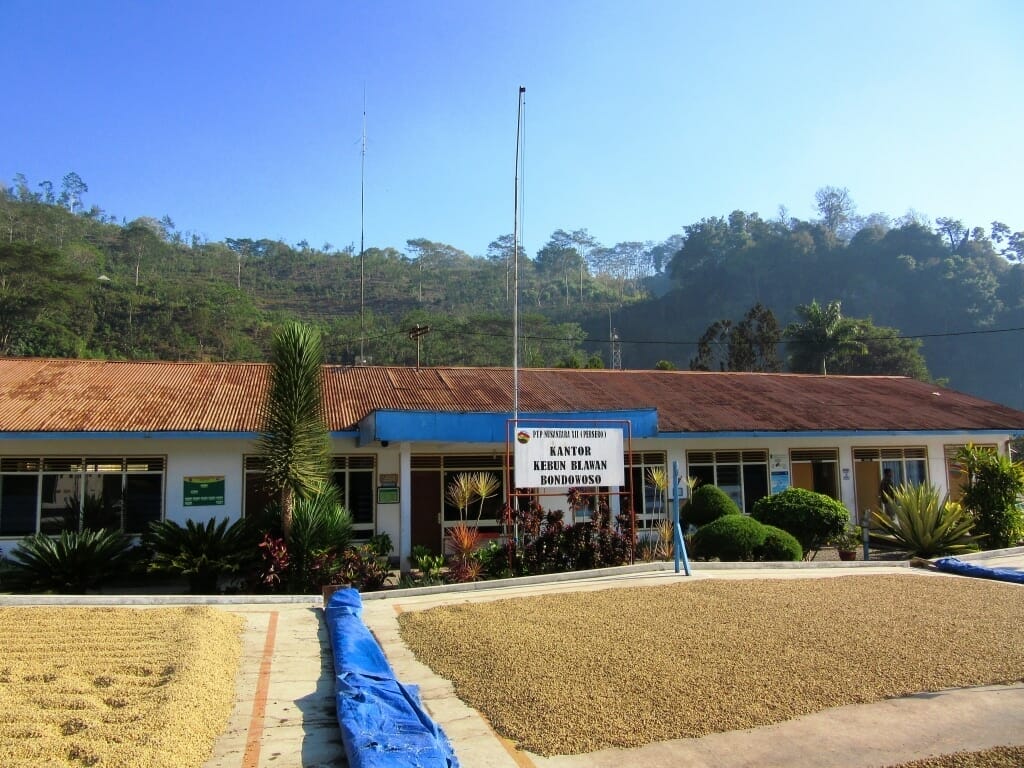
Widespread coffee leaf-rust in the late 1890s would decimate coffee production by more than half. Many growers would switch to robusta around the turn of the century, especially along the coastal areas and lowlands. Arabica production survived primarily inland in the highland regions. Throughout the first half of the 20th century Indonesian coffee output would continue to grow, but mainly through small-holder farmers in Sumatra and the large estates of Java began to decline.
Market Structure
By 1949, Indonesia had gained its independence and by 1957, the major remaining Dutch Coffee plantations had been nationalized. The government at this time used farmer cooperatives as political tools and many individuals did not trust them to protect their interests. During the late 1970s and 1980s, Indonesia saw large agricultural growth, but the development was primarily focused on rice and other food crops. The primary government intervention in coffee during this time was the adherence to export quotas set forth by the ICA. These quotas were managed by AEKI, the association of Indonesian Coffee exporters, who saw steady profits while farmers received a small portion of the FOB price.
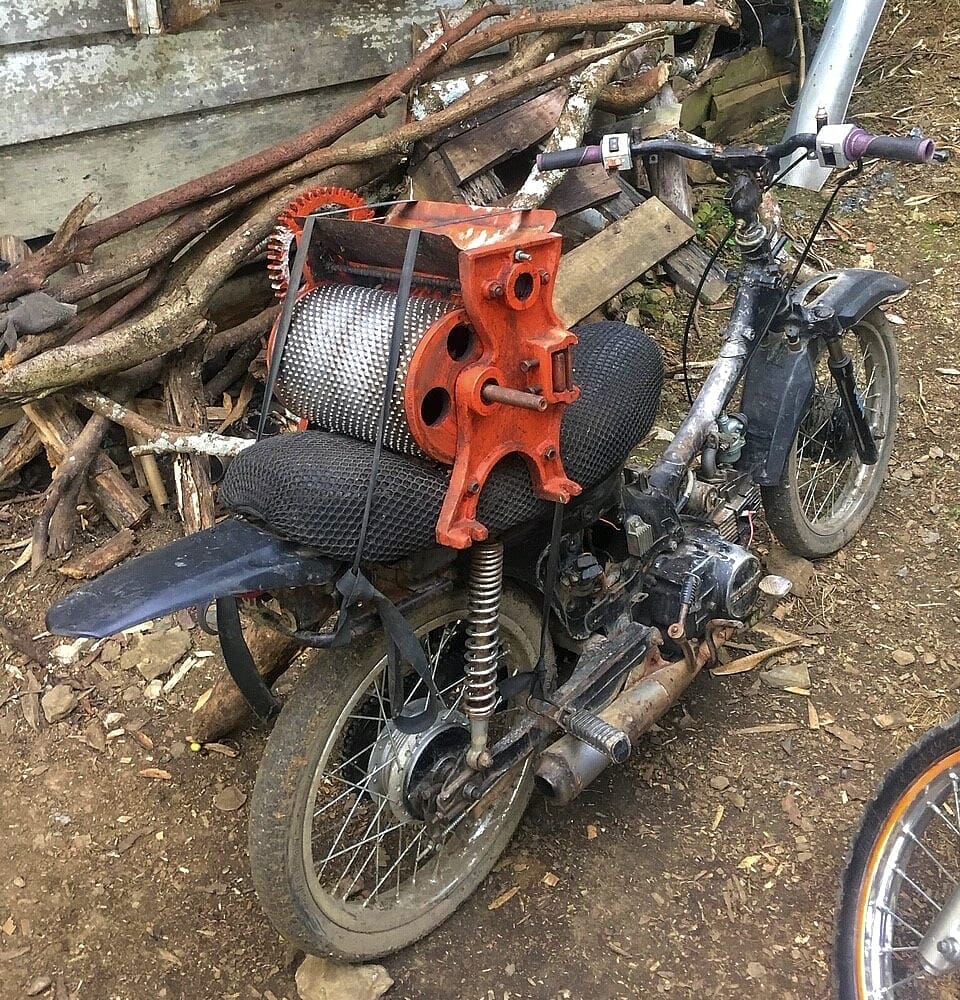
The coffee sector remains heavily fragmented across the country, with the exception of the few large estates that remain. With high humidity and less pronounced rainy/dry seasons, farmers’ trees ripen unevenly. This requires them to make multiple passes at picking relatively small amounts of cherries. It is not economical for a farmer to transport this small amount of cherry to a nearby town to sell to a district collector directly, so there are local collectors who travel the remote countryside buying coffee to bring to the village. They are also where a farmer may purchase fertilizer or pesticide, sometimes on credit, which will paid back when the farmers coffee is sold to the collector. The village collector will transport the coffee to a centralized mill for hulling and drying. The coffee will then be transported to larger district collectors near trading centers. Agents operating on behalf of the district collectors will then find an exporting partner to sell the coffee. All of these sales of coffee represent value loss in the supply stream as more and more people need to be paid for risk assumption, transport, storage, and marketing. There is also no incentive for farmers to produce a higher quality coffee since they receive only a small fraction of the ultimate sale price in many cases. The best way for a farmer to attain a higher price is by prioritizing yield and producing more coffee.
Processing
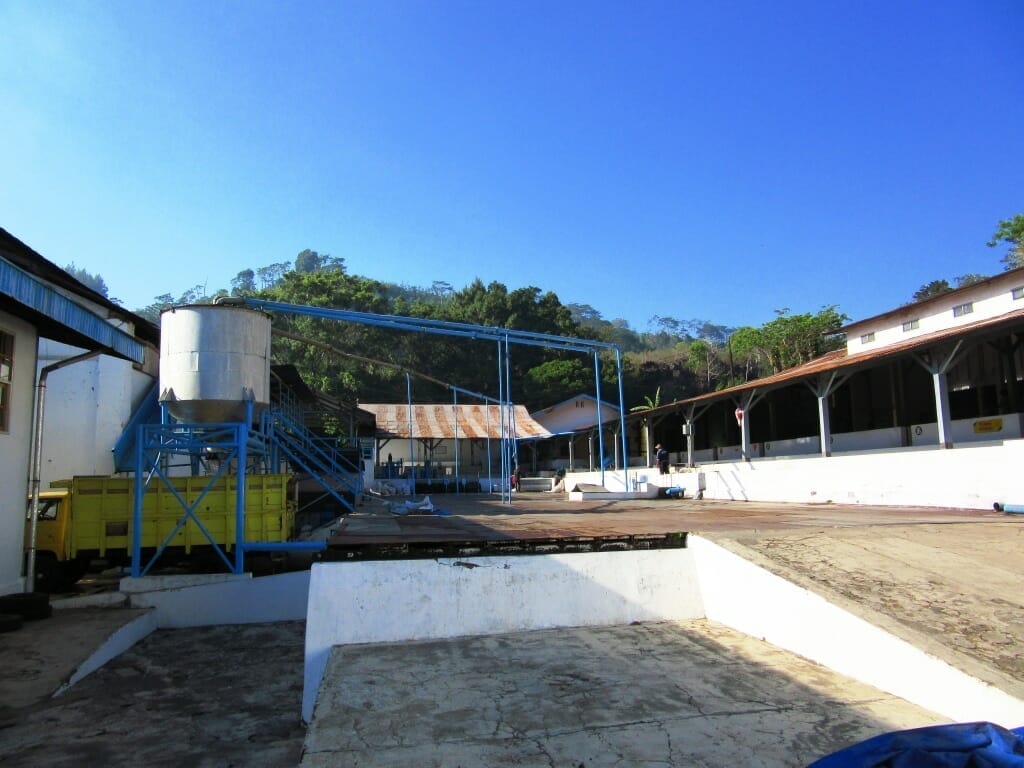
The wet and humid climate of Indonesia prevents farmers from using the traditional natural or washed processing styles. In order for the coffee to dry quickly, farmers in Indonesia have developed a unique processing style that creates a unique flavor profile that is heavily sought after by some consumers. The processing style is Giling Basah or Ngura, but in the west it is most commonly referred to as wet-hulling.
After the coffee is selectively picked by the farmers, it is sometimes floated in water tanks to remove any underdeveloped or damaged cherries. It is then pulped using small, wooden hand-operated machines on the farm. In some instances the coffee may be sold as whole cherry or as pulped mucilage. More often, it is fermented overnight to breakdown the mucilage layer. This may be a wet fermentation which involves soaking the coffee overnight in small buckets. Wet-fermentation generally produces a more consistent quality of coffee. Or it will be dry fermented which is when the pulped mucilage-covered coffee is packed in bags overnight without water. This is a variation of anaerobic fermentation, and when executed properly will create more fruity, and complex coffee. The next day it is laid out to dry, only for a few hours, on patios, rooftops, or sometimes inside the home on the floor. This initial drying will stop when the coffee is between 40-50% moisture, this is known as Labu coffee or wet-parchment coffee.
It is bagged and sold to the local collector who will transport and sell the coffee to a more centralized mill. The mills have relatively expensive and specialized equipment which can remove the parchment layer while the coffee is still relatively wet at this 40-50% moisture level. Removing the parchment decreases the drying time to 12% moisture from several weeks to 1-2 days.
The parchment layer protects the seed from the environment, and when this layer is removed, the seed is vulnerable. The coffee’s final flavor will be indicative of how it is handled in this stage. If the facility and equipment is not clean and dry, the flavors will be less refined. Wet-hulled coffee has a characteristic earthy and heavy bodied flavor profile.
Research Institutions
The Indonesian Coffee and Cocoa research Institute was founded in 1911 by the name of Besoekisch Proefstation. Since then, its name and managing agency have changed many times, but its goal has remained the same: to conduct research that will aid in developing the fields of cocoa and coffee. Currently, it is known as Puslitotka and operates under the Ministry of Agriculture’s Plantation Research Institute. ICCRI operates an experimental coffee farm of 380 hectares for research surrounding plant breeding, morphology, yield, quality, and hardiness. ICCRI operates several labs offers training sessions for farmers.
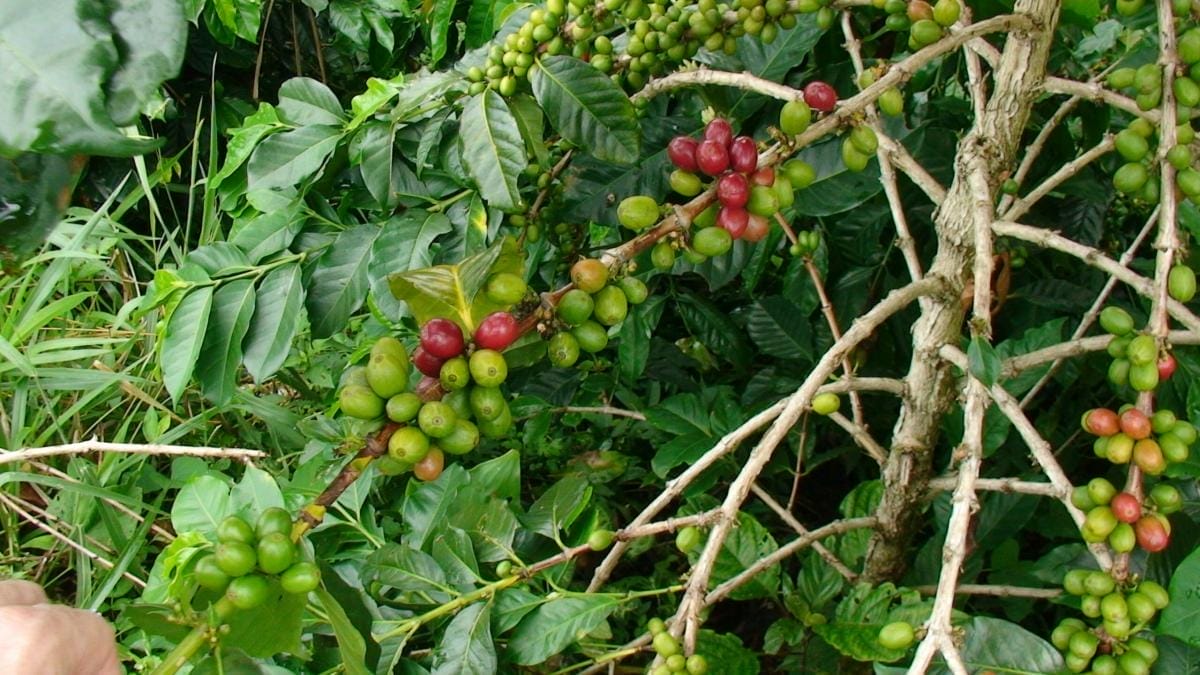
Varieties
Jember or S795 is one of the most common varieties in Java. It was created in India by crossing the Kent variety with Coffea liberica, a separate species of coffee. The variety was sent to Indonesia because of its leaf rust resistance, but over time, it has become more susceptible. It is known locally as Jember because it was distributed to farmers by the ICCRI in Jember.
Tim-tim gets its name from the Timor Hybrid first discovered at the nearby island of Timor. The timor hybrid is a cross between Arabica and Robusta that shows good leaf rust resistance. Tim-tim was introduced into northern Sumatra in the 1970s as a stabilized selection of the Timor Hybrid by ICCRI.
Gayo 1 or Tim-tim Aceh is a redistributed selection of Tim-tim after Participatory Varietal Selection (PVS) study funded by UNDP in conjunction with ICCRI in 2006-07. Farmers presented successful varieties for analysis and Tim-tim Aceh was found to be a ‘new local variety’ with different characteristics from the Tim-tim variety introduced 30 years prior. By 2010, ICCRI had stabilized the variety and introduced it to the local community for replanting as Gayo 1.
Gayo 2 or Bor-bor was discovered a result of the same 2006-07 Participatory Varietal Study. Bor-bor lineage is not well understood, but it is believed to be a related to S795, Tim-tim, and perhaps bourbon but since bourbon is very uncommon in Indonesia and it was a field selection, it is very unlikely.
Sigara Utang or Ateng is the result of a farmer’s selection of a 1970s seed distribution program by ICCRI. The farmer noticed one plant growing more compact with higher yield, so he continued to replicate and plant more of that variety. Over time the variety spread from its initial planting area in Aceh Tengah across Aceh and into Northern Sumatera, where new farmers called it Ateng (Aceh Tengah) based on its origin. It was officially recognized as a new local variety recommended by ICCRI in 2004.
Typica or Juria was the first coffee variety planted in Indonesia, but because of its high susceptibility to rust it has become less common outside of high mountain areas in Sumatra.
Current Climate
Indonesia’s current market structure and susceptibility to climate change pose serious risks for the future of its coffee industry. Rising temperatures in the region and decreasing temperature variation of high-grown arabicas will result in decreased quality. Northern Sumatera, Sulawesi, Flores, and Bali are predicted to see increases in total annual precipitation coupled with increased intermittent year-round rainfall leading to continuous flowering of coffee plants and exacerbating poor drying conditions. Overall, the shifting weather patterns favor increased robusta production with decreased arabica production.
The resources needed to deal with this issues are difficult for many farmers to come by. Lack of strong farmer organizations and overall industry fragmentation result in low yields and low profit margins for small farmers. Lack of access to capital through lending institutions has prevented many farmers from making improvements to coffeelands which could make a difference. Fertilizers and replanting of older varieties could significantly boost yields. When compared with neighboring Vietnam, Indonesia has 3x the number of small farmers but their yield is roughly 1/3.
